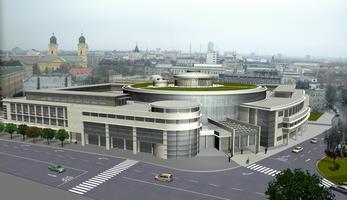Conference centre accessibility scheme and pedestrian zone
Thematic areas
Demand & urban space management
Summary
The measure was designed to encourage tourism by increasing the attractiveness of the city centre and reducing traffic congestion.
Implementing sustainable mobility
Completed in 2005, Debrecen’s Kolscsey Conference Centre is one of the largest and best-equipped buildings of this type in Eastern Europe and was a major investment for the city. The conference centre has underground parking facilities for 300 vehicles and is located close to the city’s first pedestrian area.
The measure focused on the development of the downtown area, including the extension of the existing pedestrian zone towards the conference centre. This involved a dense commercial area, as well as destinations connected to social, religious and administrative activities. The extension of the pedestrian zone would also reduce on-street parking, with the conference centre’s underground car park being used as a “park and walk” facility with direct connection to the pedestrian zone and tram stops.
Progress
The municipality launched a call for tender to define the project. According to national law, designers were asked to prepare and submit their concept in a proposal. The chief architect of the city and the evaluation committee selected the best solution. The mayor signed the contract with the winning designer in 2006.
In February 2007, the city leaders accepted the project developed for the extension of the pedestrian zone. After a long evaluation process, the construction permit was obtained at the beginning of 2008. Unfortunately, due to ongoing financial problems, the city’s annual budget was not able to meet the cost of the construction during the project period. As a result, the planned evaluation of, in particular, citizens’ acceptability of the pedestrian extension, has not been carried out.
Outcomes
The direct outcome of the measure is the implementation plan for the pedestrian zone that can provide a basis for further developments.
By offering a direct connection to the pedestrian zone from the conference centre, it can be assumed that participants arriving by car for an event lasting two or three days will opt to walk to the city centre or use the tram for sightseeing, rather than use their own car.
This fact sheet has been updated by a third party on the basis of available information (not by the city itself), therefore we do not guarantee any data with respect to their content, completeness or up-to-dateness.







